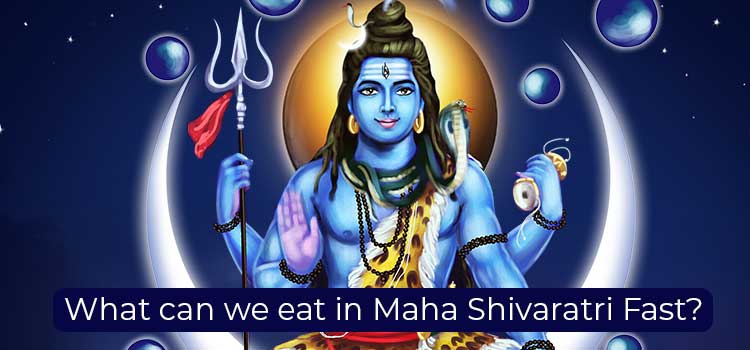What can we eat in Maha Shivaratri Fast?
What can we eat in Maha Shivaratri Fast?
One of the most significant and widely celebrated festivals across India, Maha Shivaratri celebrates Mahadev (The Great God), Shiva, known as one among the Holy Trinity apart from Brahma and Vishnu, and perceived as the Supreme Being of Shaivism.
Maha Shivaratri means the ‘Great Night of Shiva’. This year, it falls on Thursday, March 11. It occurs on the 14th night of Chaturdashi in the Krishna Paksha (dark fortnight when the moon is waning), in the month of Phalguna (Hindu calendar), which occurs in February -March, according to the Western calendar.
Being celebrated through the night, devotees keep an all-night vigil at Lord Shiva temples and in their homes. This is one of the main traditions of the festival. No Hindu festival or any other Indian festival for that matter goes without food being a part of it! While fasting is as much a part of Indian tradition, even on certain days of the week or month, or on some auspicious day, the Prasad (sacred food offering) plays a huge role as an offering to the Gods. Even a fast can have some element of food in it.

Receive A Free Energized Rudraksha For Maha Shivaratri
However, it is important to remember that fasting is observed not only to revere the deity, but also to cleanse one’s system, which should eliminate toxins and food elements that can ignite Rajas (hyperactivity, aggressiveness) or Tamas (darkness, ignorance) gunas. Consumption of Sattvic food is encouraged during the Vrat for Shivratri. It is a period of austerity.
According to scriptures, fasting helps an individual to maintain a balance of body, and soul. It can be perceived as a denial of physical needs to attain spiritual goals. It helps forge a connection with the Divine and is for the well-being of the individual, as it nourishes the physical and spiritual demands.
Maha Shivaratri fasting (Vrat) is a major tradition observed by the devotees, which they begin after taking a holy bath. While some devotees opt for the Nirjala (without water) fast, some of them consume only water. Some of them opt for milk and fruits during fasting. Fruits play a significant role in festivals and rituals. They are a part of the main offerings.
While one cannot consume rice, wheat, pulses, or cereals during the fast, certain vegetables can be consumed, like potato. However, for the Vrat, one can consume it with Sendha namak (rock salt). Regular salt must be avoided. Onion, ginger, garlic, and turmeric cannot be added. Sabudana (tapioca pearls), ragi and buckwheat are allowed as they are not cereals.
Shiva is extremely fond of milk, which is offered for Abishekam. Popular milk-based products can be consumed ding the Vrat. No festival is complete without sweets. Milk plays a vital role in preparation of sweets. Milk is used in sherbets and shakes too.
Vrat snacks based on singhara flour, raw plantain and potato can be consumed by adding black pepper powder or peppercorn, cumin or cumin powder, green cardamom, cinnamon, and carrom. Sendha namak can be an added flavor. Rajgira flour (amaranth) can also be used for snacks during fasting.
Those who cannot undertake ‘water’ fast can consume fruits, milk, and water called Phallar. One can consume fruit chaats, fruit salads and fruit milkshakes. They can also consume dry fruits including walnuts, almonds, dried apricots, dates, raisins, and cashew nuts. Dry fruits are high in protein and healthy fats. They are good for consumption.
It must be kept in mind that the Vrat (fast) for Shivaratri is being observed to control the body and mind and one must exercise self-restraint. Keeping a Vrat for Maha Shivaratri is a process of cleansing and for the overall well-being.
In one’s daily life, it is rather difficult to follow the path of spirituality unswervingly. Having to deal with worldly fulfillment and satisfaction, it is important to exercise control and restraint, practicing austerity to focus on spiritual attainment. Fasting can be perceived as a form of training for endurance, and as a measure of self-discipline too. Food gives gratification but fasting allows the senses to contemplate.
Maha Shivaratri fasting is to rein in an individual’s demands and fulfillment, to reach for a higher level of attainment, of spirituality, balance, peace, and harmony.



















